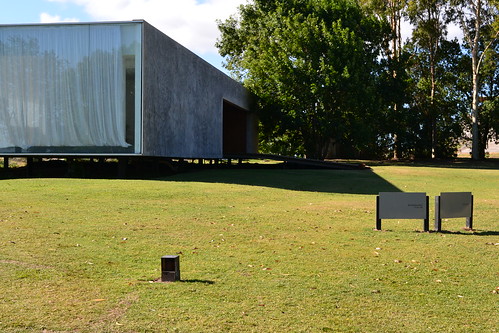 I came across this graphic recently to build your own model of the Petit Trianon. Simply click on the image above to enlarge and save to your computer. Print out on cardstock and voila -a few minutes of fun crafting! You may remember the postcard models I built of various house styles which I keep on my desk at work-this is soon to join them. Enjoy!
I came across this graphic recently to build your own model of the Petit Trianon. Simply click on the image above to enlarge and save to your computer. Print out on cardstock and voila -a few minutes of fun crafting! You may remember the postcard models I built of various house styles which I keep on my desk at work-this is soon to join them. Enjoy!
Architectural engineering design.autocad career .learnin,news,architecture design tutorial,
Monday, January 31, 2011
Build the Petit Trianon
 I came across this graphic recently to build your own model of the Petit Trianon. Simply click on the image above to enlarge and save to your computer. Print out on cardstock and voila -a few minutes of fun crafting! You may remember the postcard models I built of various house styles which I keep on my desk at work-this is soon to join them. Enjoy!
I came across this graphic recently to build your own model of the Petit Trianon. Simply click on the image above to enlarge and save to your computer. Print out on cardstock and voila -a few minutes of fun crafting! You may remember the postcard models I built of various house styles which I keep on my desk at work-this is soon to join them. Enjoy!
Monday, Monday
This week's dose features Korean Church of Boston in Brookline, Massachusetts by Brian Healy Architects:

The featured past dose is CHA Competition in Chicago, Illlinois by Brian Healy Architects:

This week's book review is Commonplaces: Thinking About and American Architecture by Brian Healy:

american-architects.com Building of the Week:
Museum of the Moving Image in Astoria, Queens by Leeser Architecture:

Some unrelated links for your enjoyment:
Daily Architecture
"We are dedicated to bringing you daily architecture from around the world in the form of stunning photos with links to tell you more." (added to sidebar under blogs::aggregate)
Green Building
"Are cities the best place to live? Are suburbs OK? A fight grows in urban planning, with Harvard at the center."
HowdyHeidi
"If Switzerland is on your radar, or you simply love everything Swiss, you have come to the right place. HowdyHeidi ... is a buzzing visual archive pointing you to all things swiss." (via Build Blog)
Stuck in Studio
"A website made for architecture students." (added to sidebar under architectural links::education)
Sunday, January 30, 2011
Today's archidose #470
To contribute your Flickr images for consideration, just:
:: Join and add photos to the archidose pool, and/or
:: Tag your photos archidose
Saturday, January 29, 2011
Culver City Contemporary
Yet not having visited the area, and with most coverage focused on individual designs, it was hard to get an overall idea of the 25-year (and counting) project that is transforming the once-blighted area into an area with "creative work space, restaurants, grassy parks and — with the addition of Samitaur Tower I — exhibit and performance space for the many dimensions of culture." So I decided to map the various buildings and installations to get a better handle on the ongoing project. Be sure to click on the image below for a better graphic.

[Click image for larger, expanded view with thumbnails of projects | aerial source]
1. 8522 National Boulevard ComplexThe image above and accompanying larger, expanded view are based primarily on the project list on Eric Owen Moss's web page, ordered chronologically, from 1986 to present.
2. 3520 Hayden Ave
3. The Box
4. Samitaur (east of aerial)
5. 3535 Hayden Ave.
6. What Wall?
7. The Umbrella
8. Slash & Backslash
9. Stealth
10. Beehive
11. 3555 Hayden Ave
12. Samitaur Tower
13. 3585 Hayden Ave (under construction)
Aldo Rossi (1931-97): The Architecture of the City

Reviewed by ANGAD KASLIWAL
Introduction
The architecture of the city is a significant departure from the past models of urbanism in the contemporary context of Italy . The first version of the book was published in 1966. Rossi in his writings has tried to redefine the ‘architecture of the city’ with a concentration on ‘urban artefacts’, the catalysing monuments from the past.
Daedalus, the architect of mythology, in his creation of labrynth explains the corelation of the book with its cover page; the form is interpreted in two ways, one, spiral as mausoleum, symbolically a place of death. In case of book unconsiously on his part – death of humanism and two, spiral as labrynth which is symbolic to transformation. The spiral has further message for Rossi which symbolizes his own right of passage – his role as a part of generation progressively more distanced from the positivism of modern architecture by the collapse of historical time and left drifting to an uncertain present.
Urban artifacts and Theory of the city
According to Rossi, costruction is a process that is inseparable in value to time. Ever from its evolution, mankind has built favorable surroundings with its roots in its civilization. These built forms transform themselves over the years overlapping the theme of its own development and thus there is a contrast in the existence of the structure over time. The change of nature of the ‘urban artifact’ may diminish the value of the evolution, overriding the rational design of ‘locus’. Singularity of one region of the city is what characterizes them as locus solus. Urban singularity has to take care of these artifacts. The development of the city about these artifacts or a group of them in a certain locality constitutes the nature and morphology of the city and this frame of reference helps Rossi to define ‘Urbanism’.
Individuality of urban artifacts
The form of the city can be studied with respect to the works of engineering and massive structures, and structures characterized by their own history. The mis-corelation of these two entities imples the complex reality which needs to be addressed for an urban future. Richness of the history is the characterstic of an urban artifact, its auspicious character and omnious moments of life makes it an indispensable part of the city. An urban artifact is a work of art. A city is always seen as a piece of human achievement over the years and this piece of art holds the major contribution for the collective individuality of the city.
Typological questions and critique of naive functionalism
Since architecture is distinct with reasons of its own; typology, classification and their characterstics influencing the city are important features of urban perspective. The individual classicism to lowest classifications initiates the theory of typology. The loweset featured element that is co-product in different constructions is a vital basic element of the city. Type is thus constant and manifests itself with the character of necessity. Even though it is pre-determined it reacts dialectically with technique, function and style.
The term function is not being discussed for typology considered with urban artifacts. For urban artifacts the function changes with time and its typology may become uncertain for the instance. If cities were classified on a broader perspective, it would delimit its typology to the commercial, cultural, military etc. Rossi questions the change of function for urban artifacts. The change of its naive function may obstruct the transfer of culture, of which the city is an important element. Urban artifacts are not the elements of consumption for the city, till considered in the domain of architectural and moral value. Typology and functions contradict if they are studied from the urban artifact point of view, hence the naive functionalism of the structure in time is considered.
Complexity of Urban Artifacts and the Theory of Permanence
After discussing Milizia’s work which explains the perception of building as private and public based on its streets and architecture. In other words the description of function is easy to verify which goes beyond naive functionalism. Rossi was often asked for his considerations o why only a historian can give a complete picture of city, to which Rossi replies, it is only the historians who are in totality concerned with the defining of urban artifacts and their evolution in different eras.
To think of urban science as historical science is a mistake, history contributes to urban science and hence is very important. This statement concerns the theory of permanence. The city is always considered as a man-made object and the past will always be partly experienced and gives meaning to permanence. This permanence can be experienced in terms of the existence of form and a direction that the city is directed to with ‘propelling’ elements and ‘pathological’ elements. Rossi explains that there is nothing new about these analogies but is an attempt to formulate the theory of urban artifacts.
Primary elements and dynamics of urban elements
Rossi defines urban artifacts as primary elements because their existence has contributed to the morphological and cultural evolution of the city. Any element capable of accelerating the process of urbanization in the city is a primary element, including an empty space.
At the end of the pax romana cities had marked boundaries by erecting walls around them, at times well furnished items were abandoned and cities enclosed a smaller surface area, but the potential of the urban artifacts helped develop the new cities in their current form. For example the amphitheatre at Nimes was transformed to a fortress and became a small functional city of two thousand inhabitants. The city beyond the wall grew with the form of the amphitheatre as a major element.
Monuments, Geography and History
Rossi advancing this theory for urban artifacts and with a novel vision for urbanism says that a city is a collective memory of its people, and like memory it is associated with objects and places. The city is locus of collective memory. This relationship between locus and citizenry then becomes a city’s predominant image, a great shape history moulds its future to. A related example of the roman forum will explain the co-relation between the parameters talked about here.
The Latins and the Sabines lived near the forum valley. The principal city was formed by tribes which scattered throughout the hills. The fifth century forum ceased as a market place and changes its function to a place of worship. The dynamism of these urban artifacts played an important role in the development of the space.
Conclusion
In his attempt to evolve the city with the perspective of urban artifacts, Aldo Rossi has convincingly proposed his theory. Not only considering the hypothetical idea of developing a city in words, Rossi also tries to incorporate the facts of politics and other socio-economic issues, citing Athens and its strong theoretical base for its existence, he concludes his idea of this manmade object as an achievement to mankind and its existence. The architecture of the city is a physical sign in man’s biography, indulged beyond the meanings and feelings with which we may recognize it.
Friday, January 28, 2011
Book Briefs #3

1: Morris Lapidus: The Architecture of Joy by Deborah Desilets | Rizzoli | 2010 | Amazon
While the architecture of Morris Lapidus was not appreciated by contemporaries, a growing appreciation for his work has occurred in the last couple of decades. He is best known for the curving balconies of a number of hotels in Miami Beach, which are collected here in coffee-table-book style in large color and black-and-white photographs. Most of the book is just that, photos of a small number of Lapidus's many buildings, with appreciative text coming at the back of the book.
2: Guastavino Vaulting: The Art of Structural Tile by John Ochsendorf | Princeton Architectural Press | 2010 | Amazon
Grand Central Terminal's Whispering Gallery, and the Oyster Bar Restaurant which it fronts, are popular yet hidden destinations for tourists. The auditory and spatial qualities of each can be attributed to the Rafael Guastavino family, who "oversaw the construction of thousands of spectacular thin-tile vaults across the United States between the 1880s and 1950s." Many are in New York City, and they and others are highlighted in this history of the family's techniques and art that created such memorable and long-lasting spaces.
3: Stickwork by Patrick Dougherty | Princeton Architectural Press | 2010 | Amazon
I first became familiar with artist Patrick Dougherty with another PAPress title, Natural Architecture by Alessandro Rocca; one of his "stickworks" actually graces the cover of that book. Here his amazing outdoor and gallery installations fill a whole book. His stickworks resemble oversized bird nests, manipulated into unnatural yet organic shapes and containers that one can step inside. I've yet to experience once of Dougherty's installations in person, but seeing the body of work in these pages makes me hope that day comes soon...and this will be my best bet.

4: Beyond 3: Trends and Fads edited by Pedro Gadanho | SUN Architecture | 2010 | Amazon
The third volume of the "bookazine dedicated to urban fiction and experimental architectural writing" continues in the vein of the first two, asking writers to respond to a theme. Trends and fads are addressed in a long reprinted essay on fashion by Georg Simmel and new contributions by Kieran Long, Jimenez Lai, Mockitecture, and Oren Safdie. The last is part of The Bilbao Effect, a play that puts "starchitecture" on trial. Commentary on buildings by famous architects is found in other places here, among numerous other diverse contributions.
5: Sustainable School Architecture: Design for Elementary and Secondary Schools by Lisa Gelfand with Eric Corey Freed | Wiley | 2010 | Amazon
Sustainable architecture is becoming a given on just about any project, but it is particularly important in primary and secondary schools, where a design's eco-responsibility can be a strong influence on the students. This title in Wiley's Sustainable Design series discusses the various steps in a project, from planning to occupation. Chapters focusing on the various parts of a project -- planning, design, daylighting, structures, HVAC, landscaping, furnishings, cost and bidding, construction, operations, maintenance -- lay out various considerations, strategies, and case studies, geared towards giving architects the tools and thinking for creating responsive green schools, whatever the circumstances may be.
6: Human Settlements edited by Kelly Shannon | SUN Architecture | 2010 | Amazon
According to the United Nations, "Human settlements means the totality of the human community - whether city, town or village - with all the social, material, organizational, spiritual and cultural elements that sustain it. The fabric of human settlements consists of physical elements and services to which these elements provide the material support." This book looks at the evolution of the discipline of human settlements, especially in reference to urbanism, since the 1970s. The canvas is broad, global (Pakistan, Vietnam, India, Peru, Brazil, etc.), and aided by numerous illustrations of various case studies.
On the Grid
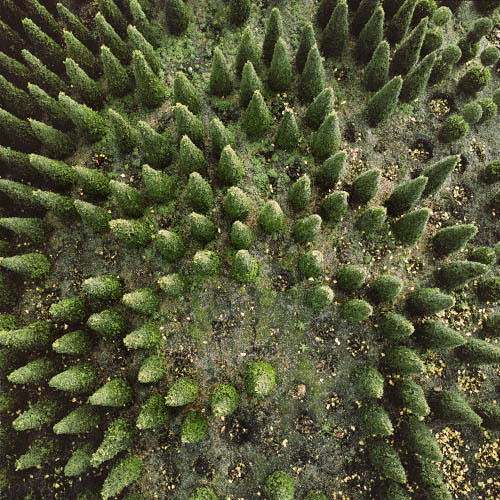 [Image: 020 by Gerco de Ruijter, 28" x 28", from Baumschule (2008-2010), courtesy of the artist].
[Image: 020 by Gerco de Ruijter, 28" x 28", from Baumschule (2008-2010), courtesy of the artist].Dutch photographer Gerco de Ruijter recently got in touch with an extraordinary series of aerial photographs called Baumschule—some of which, he explains, were taken using a camera mounted on a fishing rod.
The series features "32 photographs of tree nurseries and grid forests in the Netherlands."
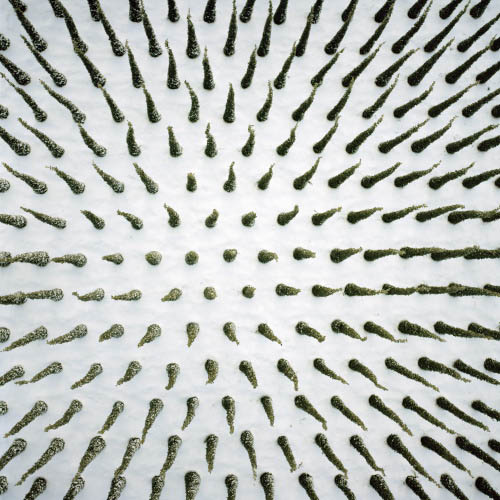 [Image: 010 by Gerco de Ruijter, 28" x 28", from Baumschule (2008-2010), courtesy of the artist].
[Image: 010 by Gerco de Ruijter, 28" x 28", from Baumschule (2008-2010), courtesy of the artist]."How abstract can a landscape become while remaining a landscape?" de Ruijter asked himself. "I tried to find the answer to this question during extended travels, by searching for a fully natural landscape, not manmade, and lacking any cultural presence. I found these 'natural-born' sites in New Mexico—deserts formed by rocks and sand and all forms of erosion. A barren landscape, too, with scarce vegetation."
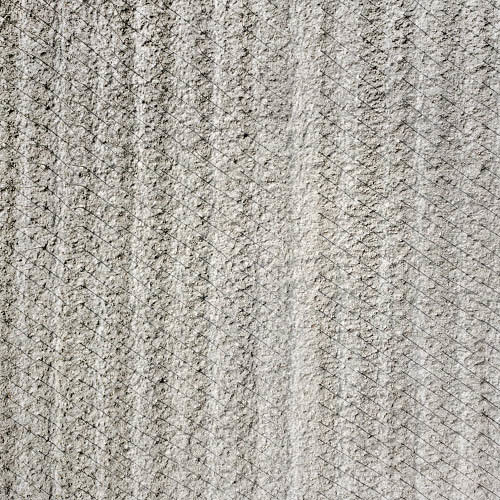 [Image: 014 by Gerco de Ruijter, 28" x 28", from Baumschule (2008-2010), courtesy of the artist].
[Image: 014 by Gerco de Ruijter, 28" x 28", from Baumschule (2008-2010), courtesy of the artist].But this same research—a quest for a kind of inhuman authenticity of the surrounding terrain—eventually brought him to the hyper-artificial landscapes of tree farms and nurseries in the Netherlands.
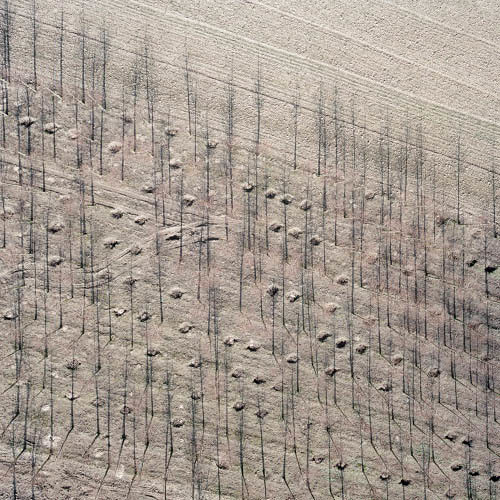 [Image: 005 by Gerco de Ruijter, 28" x 28", from Baumschule (2008-2010), courtesy of the artist].
[Image: 005 by Gerco de Ruijter, 28" x 28", from Baumschule (2008-2010), courtesy of the artist].He thus set about visually documenting what he calls "the Dutch culturally defined landscape":
- The Dutch landscape was efficiently drawn with functionality in mind on the drawing boards of urban and rural planners. Tulip fields, hothouses, land worked by farmers on tractors with their GPS handy.
 [Image: 009 by Gerco de Ruijter, 28" x 28", from Baumschule (2008-2010), courtesy of the artist].
[Image: 009 by Gerco de Ruijter, 28" x 28", from Baumschule (2008-2010), courtesy of the artist].Returning to the original question—"How abstract can a landscape become while remaining a landscape?"—de Ruijter suggests that "all of these objects arranged to form rows create a new form of abstraction, not because of the image’s emptiness but, to the contrary, because of the presence of so many 'things,' and their patterns and rhythms," as if we could farm and harvest barcodes directly from the ground.

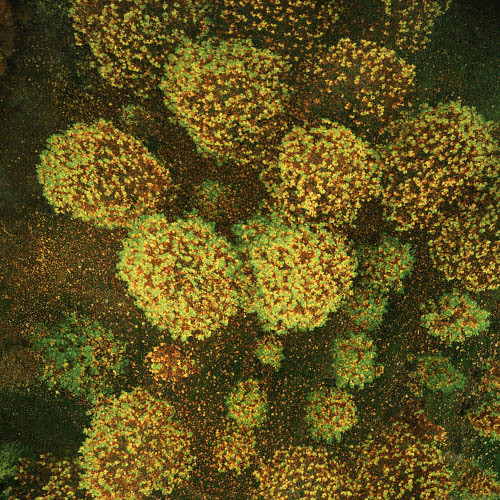 [Images: 007 and 032, all by Gerco de Ruijter, 28" x 28", from Baumschule (2008-2010), courtesy of the artist].
[Images: 007 and 032, all by Gerco de Ruijter, 28" x 28", from Baumschule (2008-2010), courtesy of the artist].Indeed, "I found an enormous variety of visual elements," he adds. "They show up not just because of the different seasons, but also through the stratification of the land. Trees, soil, holes. The combination of a tight grid and the camera’s central perspective results in a distinct depth, while on a cloudy day fore and background may slide into each other."
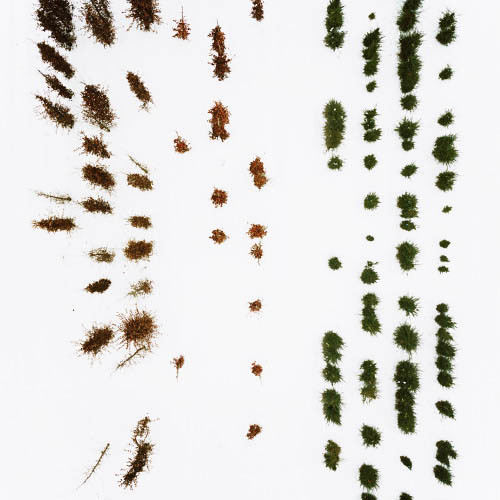 [Image: 002 by Gerco de Ruijter, 28" x 28", from Baumschule (2008-2010), courtesy of the artist].
[Image: 002 by Gerco de Ruijter, 28" x 28", from Baumschule (2008-2010), courtesy of the artist].To take these photos, de Ruijter used both kite photography and even "a long fishing rod."
He describes how the process worked: "On top of this rod is a 2.5" x 2.5" camera with a wide-angle lens. A self-timer is adjusted to give me enough time to telescope the rod and manoeuver the camera above the subject. The frame of the image begins in front of my own shoes and measures roughly 30' x 30'."
 [Image: 001 by Gerco de Ruijter, 28" x 28", from Baumschule (2008-2010), courtesy of the artist].
[Image: 001 by Gerco de Ruijter, 28" x 28", from Baumschule (2008-2010), courtesy of the artist].It is fascinating to see, though, when the arboreal vitality of the trees overcomes the grid they're planted in, to become fractally expressive of a different formal logic, one that exceeds any agricultural formatting of the landscape.
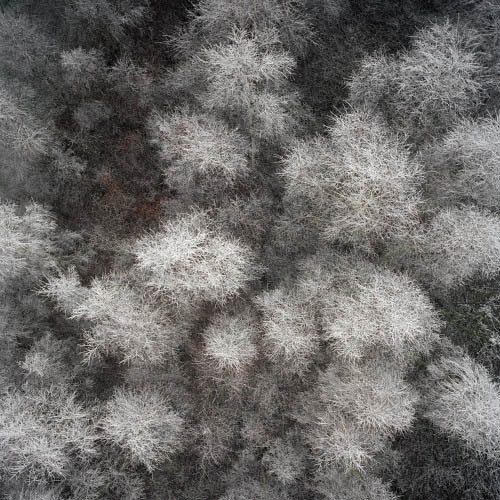 [Image: 028 by Gerco de Ruijter, 28" x 28", from Baumschule (2008-2010), courtesy of the artist].
[Image: 028 by Gerco de Ruijter, 28" x 28", from Baumschule (2008-2010), courtesy of the artist].I should also point out that I recently found some great views of a tree farm on Google Maps, a strangely dot-matrix landscape that appears more cryptographic than botanical—an emergent garden of living QR codes.
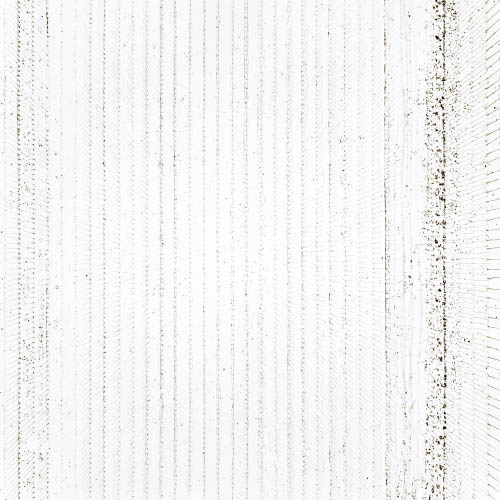 [Image: 008 by Gerco de Ruijter, 28" x 28", from Baumschule (2008-2010), courtesy of the artist, a great example of how the "fore and background may slide into each other," as the photographer describes it].
[Image: 008 by Gerco de Ruijter, 28" x 28", from Baumschule (2008-2010), courtesy of the artist, a great example of how the "fore and background may slide into each other," as the photographer describes it].Gerco de Ruijter's Baumschule series is currently on display in its entirety at the Stedelijk Museum Schiedam, where it opened last week. It closes on April 10.
Choke Points and Kill Switches
 [Image: Courtesy of Terremark, via the Atlantic].
[Image: Courtesy of Terremark, via the Atlantic]. Andrew Blum has a short piece up at the Atlantic today about the geography of "internet choke points," and the threat of a "kill switch" that would allow countries (like Egypt) to turn off the internet on a national scale.
After all, Blum writes, "it's worth remembering that the Internet is a physical network," with physical vulnerabilities. "It matters who controls the nodes." Indeed, he adds, "what's often forgotten is that those networks actually have to physically connect—one router to another—often through something as simple and tangible as a yellow-jacketed fiber-optic cable. It's safe to suspect a network engineer in Egypt had a few of them dangling in his hands last night.
Blum specifically refers to a high-security building in Miami owned by Terremark; it is "the physical meeting point for more than 160 networks from around the world," and thus just one example of what Blum calls an internet "choke point." These international networks "meet there because of the building's excellent security, its redundant power systems, and its thick concrete walls, designed to survive a category 5 hurricane. But above all, they meet there because the building is 'carrier-neutral.' It's a Switzerland of the Internet, an unallied territory where competing networks can connect to each other."
But, as he points out, this neutrality is by no means guaranteed—and is even now subject to change.
Landscape Futures Super-Media
 [Image: For a project at the Bartlett School of Architecture's Unit 11, presented and discussed at the Landscape Futures Super-Workshop, Rina Kukaj explored a series of aerial landscapes—a "purification blanket"—that would act as a distributed atmospheric filter for the city].
[Image: For a project at the Bartlett School of Architecture's Unit 11, presented and discussed at the Landscape Futures Super-Workshop, Rina Kukaj explored a series of aerial landscapes—a "purification blanket"—that would act as a distributed atmospheric filter for the city].Two write-ups of the Landscape Futures Super-Workshop have appeared. In one, Nate Berg, writing for Domus, refers to what he calls "a new shared and experimental approach to curating" that helped to animate the super-workshop's various events. In another, Friends of the Pleistocene describe their burgeoning research project into the debris basins on the edge of the city, a "long-term project to map their locations and create a typology of their forms," which kicked off during the super-workshop.
Each debris basin "exists as a 'signaling device,'” they write.
- Each announces that geologic change unfolds here, right here, in continuous and unpredictable ways. Each basin also exemplifies the best human attempt to build, plan for and contain the potentially uncontainable: the material reality of geologic time and force. When flowing debris activates these basins, an incredible shape-shifting occurs: the force and materiality of geologic time actually become perceivable. Solid becomes liquid, the far becomes near, virtual becomes actual, top becomes bottom, and a precarious equilibrium loses its poise as the habitable instantly becomes uninhabitable.
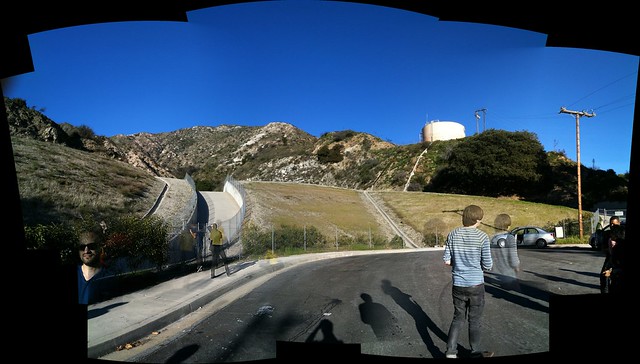 [Image: Landscape Futures Super-Workshop students visit a debris dam at the top of Pine Cone Road].
[Image: Landscape Futures Super-Workshop students visit a debris dam at the top of Pine Cone Road].The outermost suburbs of L.A. have reached what McPhee calls the “real-estate line of maximum advance” against the dark bulk of the San Gabriels—a range “divided by faults, defined by faults, and framed by them.” The San Gabriels “are nearly twice as high as Mt. Katahdin or Mt. Washington,” he points out, “and are much closer to the sea. From base platform to summit, the San Gabriels are three thousand feet higher than the Rockies.” However, they are also “disintegrating at a rate that is also among the fastest in the world.”
The San Gabriels produce, in the process, extraordinary rockslides: “On the average, about seven tons disappear from each acre each year—coming off the mountains and heading for town.” These slides are known as debris slugs, and they “amass in stream valleys and more or less resemble fresh concrete. They consist of water mixed with a good deal of solid material, most of which is above sand size. Some of it is Chevrolet size.” Debris slugs have been known to contain “propane tanks, outbuildings, picnic tables, canyon live oaks, alders, sycamores, cottonwoods, a Lincoln Continental, an Oldsmobile, and countless boulders five feet thick.” And all of it comes crashing down—frequently going right through people’s houses.
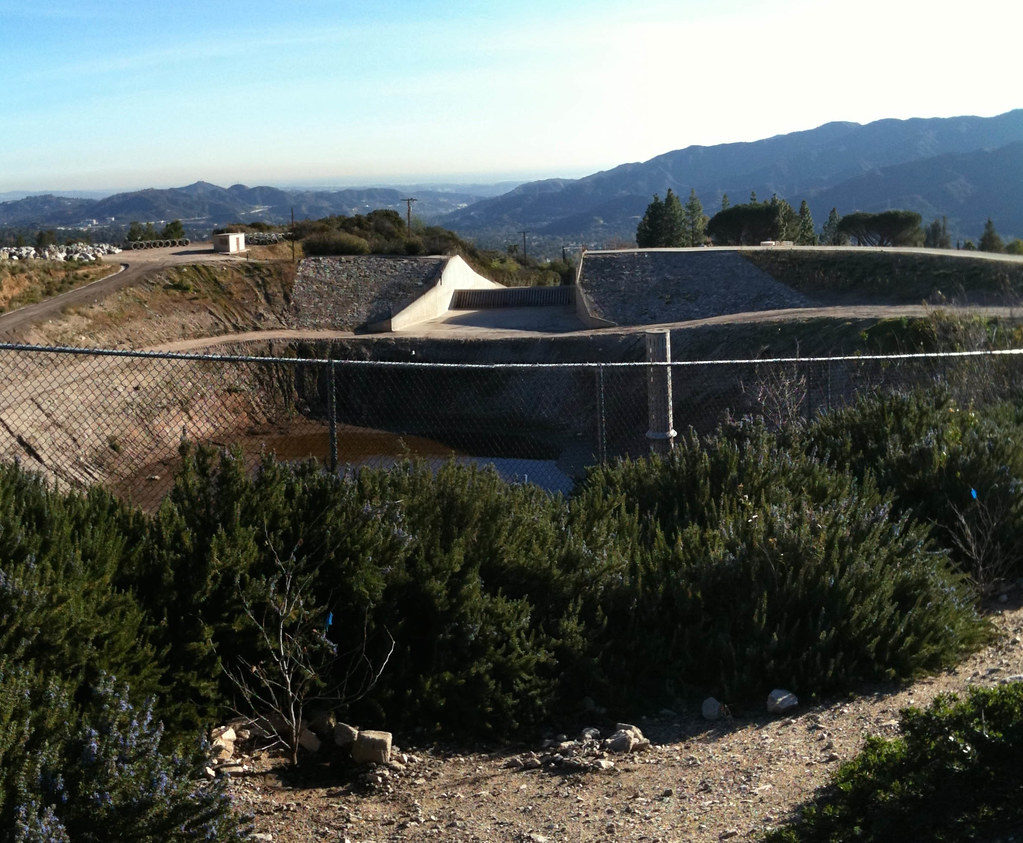 [Image: The debris dam & basin at the strikingly beautiful Deukmejian Wilderness Park].
[Image: The debris dam & basin at the strikingly beautiful Deukmejian Wilderness Park].In the face of “this heaving violence of wet cement,” as McPhee describes it, new architectural techniques have become urgently necessary. “At least one family,” for instance, “has experienced so many debris flows coming through their back yard that they long ago installed overhead doors in the rear end of their built-in garage. To guide the flows, they put deflection walls in their back yard. Now when the boulders come they open both ends of their garage, and the debris goes through to the street.” The house becomes a mechanism through which mobile geology violently flows.
Mazes of street barriers, deflection walls, overhead doors, feeder channels, concrete crib structures—these emerging typologies are not just limited to the domestic world. The whole city’s in on it. Los Angeles County “began digging pits to catch debris,” McPhee explains, surrounding itself with a necklace of voids in order to counteract an earth that moves.
The city’s debris pits are “quarries, in a sense, but exceedingly bizarre quarries, in that the rock [is] meant to come to them.” They are strange attractors, sometimes “ten times as large as the largest pyramid at Giza.”
 [Image: Deflection walls protect houses not from terrorist attack or from runaway automobiles, but from geology: rocks spalling off the nearby hills and rolling through the neighborhood; photo by Friends of the Pleistocene].
[Image: Deflection walls protect houses not from terrorist attack or from runaway automobiles, but from geology: rocks spalling off the nearby hills and rolling through the neighborhood; photo by Friends of the Pleistocene].Easily one of the most fascinating aspects of our field trip was seeing the sheer quantity of concrete deflection walls—aka Jersey barriers—that have come to line whole streets and front yards in these mountainous neighborhoods.
Objects now more popularly associated with anti-terror measures, these barriers are actually there to protect Los Angeles residents from geology. In many cases, private homes are all but invisible behind monolithic concrete barriers, surely begging a more elegant—not to mention permanent—architectural solution.
Entire, gently curving suburban roadway networks have thus been turned into emergency deflection labyrinths, extending the geometric logic of the debris basins above them.
In any case, I look forward to the results of Friends of the Pleistocene's research, and their post is worth reading in full.
Thursday, January 27, 2011
Nest Factory
 [Image: A swiftlet nesting house in Thailand; photo by Alexander S. Heitkamp, courtesy of Wikipedia].
[Image: A swiftlet nesting house in Thailand; photo by Alexander S. Heitkamp, courtesy of Wikipedia]."This drab, windowless concrete facade does not conceal an electricity substation, data servers, or a high security detention center," Nicola Twilley writes over at GOOD. It is, instead, a living birds' nest factory, an emerging building type that has "spread across Malaysia, Thailand, Vietnam, and even Cambodia, towering above traditional one-story structures and transforming the urban landscape." Their purpose? To foster the production of swiftlet nests, used in Chinese bird's nest soup.
Nicola explains that these nest farms are, in effect, surrogate geological formations: "the buildings are intended to mimic caves," she writes, where the swiftlets would normally live, "with a carefully spaced matrix of wooden rafters replacing the ledges and crannies of a cave ceiling, and detailed attention paid to internal temperature, humidity, and even sound."
They are, in effect, part of what could be called a saliva industry, as the nests are made from swiftlet saliva. A spitshop, say, instead of a sweatshop. Mechanize this one step further, and full-scale 3D saliva-printing might not be far off...
The Photography of Ezra Stoller

[© Ezra Stoller / Esto. Seagram Building, Location: New York NY, Architect: Mies van der Rohe with Philip Johnson]
AIA CES LUs 1.5
When: 6:00 PM - 8:00 PM MONDAY, JANUARY 31
Where: At The Center
Mid-Century Modernism as seen through the master's lens
Four Case Studies: Seagram Building, TWA Terminal, The United Nations, The Guggenheim Museum
Moderator:
James Sanders
Panelists:
Kenneth Frampton, Assoc. AIA
John Morris Dixon, FAIA
Brook Mason
Erica Stoller
In conjunction with the retrospective of Ezra Stoller’s photography, currently on view at the Yossi Milo Gallery, the AIANY Historic Buildings Committee is pleased to present a forum that reviews these iconic images.
The program will review, through four case studies, important architectural masterpieces of the period and the images critical to their iconic stature within the public realm. While the buildings themselves are seminal works, the experience for many is via the two dimensional image rather than the architecture itself. The discussion will trace the complex relationship between the architect /architecture and its translation through the photographer’s message.
Columbia University professor, Kenneth Frampton, will discuss the work in the context of the modern movement, joined by John Morris Dixon, editor emeritus of Progressive Architecture who is contributing to an upcoming book on Ezra Stoller, along with Erica Stoller of ESTO. Brook Mason, New York correspondent for Britain's The Art Newspaper will discuss the relationship to evolving mass culture. James Sanders, architect, and author of the award-winning book, "Celluloid Skyline" will moderate.
The event is scheduled as follows:
6:00 pm Event opens at Tafel Hall with wine and cheese for participants and attendees.
6:30 pm Welcome comments regarding events at the Center and upcoming Committee events. Four case studies will be presented by James Sanders with discussion by the panelists.
7:35 pm Moderator and audience begin a question and answer period
8:00 pm Event ends, wine and cheese continue to be served.
Free for Members; $10.00 for Non-Members
Machine Vitrine
 [Image: The spidery and self-supporting Cavity Mechanism #4 w/ Glass Dome by Dan Grayber, courtesy of Johansson Projects].
[Image: The spidery and self-supporting Cavity Mechanism #4 w/ Glass Dome by Dan Grayber, courtesy of Johansson Projects].Artist Dan Grayber has a new show on display in Oakland, at Johansson Projects. It features an ingenious collection of spring-loaded devices that play on ideas of architecture, tension, mechanics, and space.
 [Image: Cavity Mechanism #2 w/ Glass Dome by Dan Grayber, courtesy of Johansson Projects].
[Image: Cavity Mechanism #2 w/ Glass Dome by Dan Grayber, courtesy of Johansson Projects]. They are more like booby traps—their only spatial purpose to support themselves in states of high tension—or re-tuned Vitruvian readymades sealed in glass.
 [Image: Cavity Mechanism #6 w/ Glass Dome by Dan Grayber, courtesy of Johansson Projects].
[Image: Cavity Mechanism #6 w/ Glass Dome by Dan Grayber, courtesy of Johansson Projects].Grayber's Cavity Mechanism #6 w/ Glass Dome, for instance, "is a pair of spring loaded mechanisms that wedge themselves into the inside of a cavity (the glass dome in this case), suspending themselves. Cable running between pair maintains tension on both mechanisms. If cable were to fail, both mechanisms would fall."


 [Images: (top) Cavity Mechanism #5 w/ Glass Dome; (middle and bottom) Cavity Mechanism #3 w/ Glass Dome; all by Dan Grayber, courtesy of Johansson Projects].
[Images: (top) Cavity Mechanism #5 w/ Glass Dome; (middle and bottom) Cavity Mechanism #3 w/ Glass Dome; all by Dan Grayber, courtesy of Johansson Projects]. As the gallery describes his work, "Dan Grayber isolates machinery from its usual role of fulfilling human needs through placing it in an eternal mode of self-perpetuation. His safety-orange powder coated objects endlessly assure their survival through completing the simple and essential task of holding oneself up. These sculptures, which create problems as they solve them, exude a sovereign elegance, the dignity of not having to justify themselves to an outside source."
 [Image: Untitled (fishbowl) Mechanism by Dan Grayber, courtesy of the artist].
[Image: Untitled (fishbowl) Mechanism by Dan Grayber, courtesy of the artist]. This notion of a "sovereignty" of the object is a compelling one: the aloof, isolated, self-supporting nature of these pieces is done away with utterly the instant they are pulled from their glass domes.
Forced out of what could be called the tautology of the dome—a precise space of limitations in which each mechanism can perform itself endlessly—these arachnid-like devices become functionally useless.
They become not sovereign at all, but parasites robbed of their original, enabling context.
 [Image: Column Mechanism #1 by Dan Grayber, courtesy of Johansson Projects].
[Image: Column Mechanism #1 by Dan Grayber, courtesy of Johansson Projects].An example of Grayber's experiments with this latter spatial condition is Column Mechanism #1.
Removed from the glass vitrine and installed directly on a concrete wall, it "consists of central tensioning mechanisms and eight 'satellite' contact objects, in pairs. Tension created from central mechanism is run through pulleys on each pair of 'satellite' objects, pulling them together, creating tension that squeezes column and supports central piece."
Similarly, the "centrally located springs" of Drywall Mechanism #2 "use bicycle brake lines to carry tension of springs to the outer mechanisms. Outer mechanisms have points that when tensioned simultaneously gently dig into wall surface."


 [Images: Drywall Mechanism #2 by Dan Grayber, courtesy of the artist].
[Images: Drywall Mechanism #2 by Dan Grayber, courtesy of the artist].These latter examples also raise the intriguing possibility of a Dan Grayber installation disguised as everyday construction or architectural testing equipment: devices attached to drywall and concrete, like something straight out of a box from Home Depot. Until you notice the intricate systems of bike cables and tension lines, and the strangely functionless beauty of the forms poised just slightly on the right side of snapping...
 [Image: Cavity Mechanism #1 w/ Glass Dome by Dan Grayber, courtesy of the artist].
[Image: Cavity Mechanism #1 w/ Glass Dome by Dan Grayber, courtesy of the artist].The gallery will be hosting an opening reception on February 4, in case you're in Oakland and want to stop by; tell them you read about it on BLDGBLOG.
Wednesday, January 26, 2011
San Simeon: Doges Suite
 If someone were to ask me what my favorite room was at San Simeon, I would have to answer the sitting room in the Doges suite.The suite is so named as the balcony, seen above, is a replica of one at the Doge's palace in Venice - again with that view!
If someone were to ask me what my favorite room was at San Simeon, I would have to answer the sitting room in the Doges suite.The suite is so named as the balcony, seen above, is a replica of one at the Doge's palace in Venice - again with that view!  Of the many show-stoppers in this room, the most important is the ceiling, 18th century Italian. The ceiling was acquired from the estate sale of architect Stanford White, folllowing his death, where he had had it installed as his townhouse living room ceiling.
Of the many show-stoppers in this room, the most important is the ceiling, 18th century Italian. The ceiling was acquired from the estate sale of architect Stanford White, folllowing his death, where he had had it installed as his townhouse living room ceiling. The image above shows the ceiling in its' entirety.
The image above shows the ceiling in its' entirety.  White purchased the ceiling from an Italian Palazzo and had it shipped to one of his many warehouses outside of New York, where his clients would pick and choose bits and pieces from his European travels for installation in their own projects - an early example of an upscale salvage store!
White purchased the ceiling from an Italian Palazzo and had it shipped to one of his many warehouses outside of New York, where his clients would pick and choose bits and pieces from his European travels for installation in their own projects - an early example of an upscale salvage store! This was similar to the approach Hearst took with his building of San Simeon, in fact much of what he purchased was not even used. The above 2 photos are of White's living and dining rooms.
This was similar to the approach Hearst took with his building of San Simeon, in fact much of what he purchased was not even used. The above 2 photos are of White's living and dining rooms. I think I prefer this room because it's not a heavy Spanish style but rather more baroque Italian: light, colorful and fun.
I think I prefer this room because it's not a heavy Spanish style but rather more baroque Italian: light, colorful and fun. A close up of the restored Standford White ceiling. Now on with the tour!
A close up of the restored Standford White ceiling. Now on with the tour! Every single item in the room is both useful but also strikingly gorgeous, my mantra!
Every single item in the room is both useful but also strikingly gorgeous, my mantra! Two nearly identical bedrooms with private baths flank the sitting room in enfilade style.
Two nearly identical bedrooms with private baths flank the sitting room in enfilade style. The bedroom ceilings are identical but, as we were told, one is an antique and the other is a replica to match. The lamp above on the right above is an antique Venetian gondalier's lantern.
The bedroom ceilings are identical but, as we were told, one is an antique and the other is a replica to match. The lamp above on the right above is an antique Venetian gondalier's lantern. I think these rooms are much more pleasant than other guest rooms at the estate due to the vibrant colors and worn wood finishes: a softer feeling.
I think these rooms are much more pleasant than other guest rooms at the estate due to the vibrant colors and worn wood finishes: a softer feeling. The lamps throughout are all exquisite: some people have chair fetishes, mine is lamps. These little alabaster lamps were just adorable with the bell shades -also notice the silver sconces.
The lamps throughout are all exquisite: some people have chair fetishes, mine is lamps. These little alabaster lamps were just adorable with the bell shades -also notice the silver sconces. Again the rooms are finished with suitcases and clothing from the 30s, a nice touch. I love the antique vestment above the bed.
Again the rooms are finished with suitcases and clothing from the 30s, a nice touch. I love the antique vestment above the bed. So tell me, would you prefer the Doge's suite or the tower bedroom?
So tell me, would you prefer the Doge's suite or the tower bedroom? Images of Standford White's townhouse and ceiling image from "Gilded Mansions: Grand architecture & high society" by Wayne Craven.
Images of Standford White's townhouse and ceiling image from "Gilded Mansions: Grand architecture & high society" by Wayne Craven.